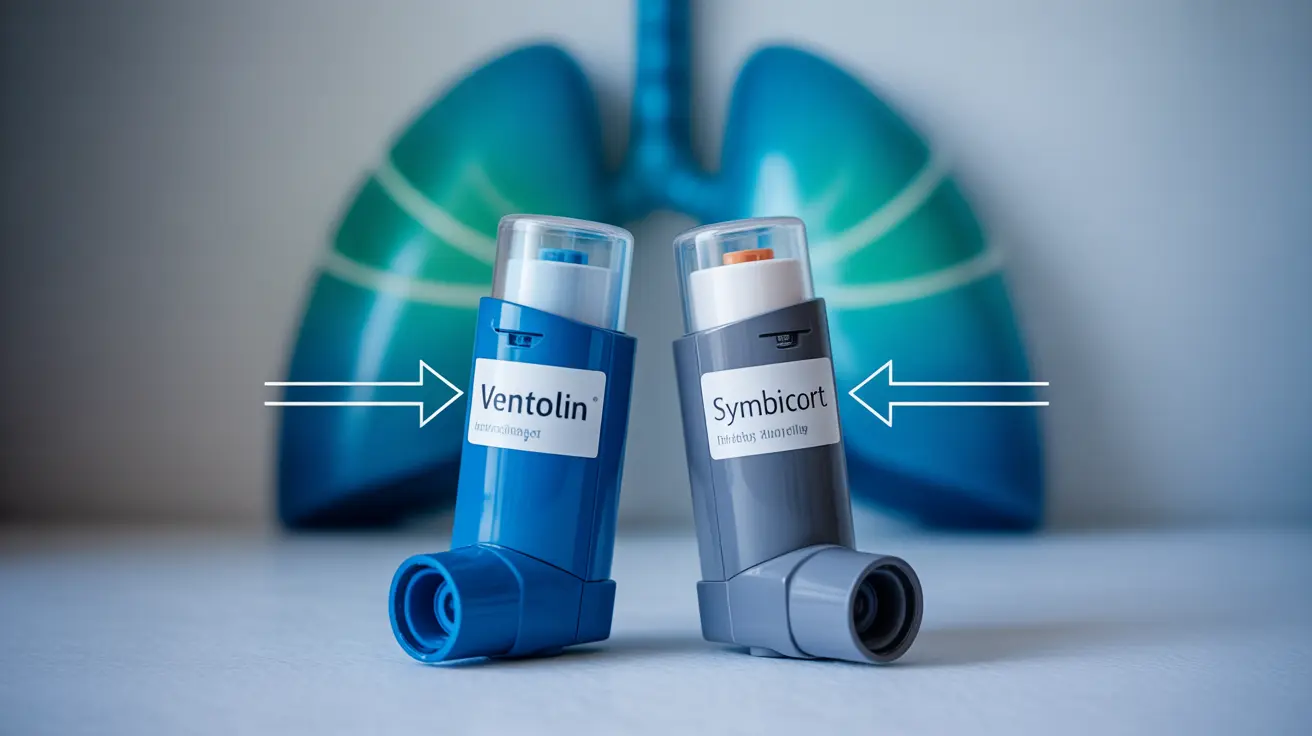Managing asthma effectively often involves understanding different medication options and their specific roles in treatment. Two commonly prescribed asthma medications, Ventolin and Symbicort, serve distinct yet complementary purposes in controlling asthma symptoms. This comprehensive guide explores their differences, uses, and how they fit into modern asthma management strategies.
Understanding Ventolin and Symbicort: Key Differences
Ventolin (albuterol) and Symbicort (budesonide/formoterol) belong to different classes of asthma medications. Ventolin is a short-acting beta-agonist (SABA) that provides quick relief during acute asthma symptoms, while Symbicort combines a long-acting beta-agonist (LABA) with an inhaled corticosteroid (ICS) for both maintenance and, in some cases, rescue treatment.
How Ventolin Works
Ventolin works primarily as a rescue inhaler by:
- Rapidly relaxing airway muscles
- Providing quick relief from sudden symptoms
- Acting within minutes of use
- Lasting approximately 4-6 hours
How Symbicort Works
Symbicort serves a dual purpose by:
- Reducing airway inflammation through its corticosteroid component
- Providing long-term bronchodilation through its LABA component
- Offering both maintenance and potential rescue treatment
- Maintaining effectiveness for up to 12 hours
SMART Therapy: A Modern Approach to Asthma Management
Single Maintenance And Reliever Therapy (SMART) represents an innovative approach to asthma treatment using Symbicort. This strategy allows patients to use Symbicort both as their daily maintenance medication and as needed for symptom relief, potentially eliminating the need for a separate rescue inhaler.
Benefits of SMART Therapy
The advantages of SMART therapy include:
- Simplified treatment regimen with one inhaler
- Reduced risk of overreliance on rescue medications
- Better control of underlying inflammation
- Potentially fewer asthma exacerbations
Safety Considerations and Treatment Selection
While both medications are effective, their appropriate use depends on various factors including asthma severity, frequency of symptoms, and individual patient needs. Healthcare providers carefully evaluate these factors when determining the most suitable treatment approach for each patient.
Frequently Asked Questions
What is the difference between Ventolin and Symbicort in treating asthma?
Ventolin is a fast-acting rescue inhaler that provides immediate relief from acute asthma symptoms, while Symbicort combines long-term control medication with a bronchodilator for both daily maintenance and potential rescue use in certain patients.
How does SMART therapy work for managing moderate to severe asthma?
SMART therapy uses Symbicort as both a maintenance and rescue medication, allowing patients to respond to worsening symptoms with additional doses of anti-inflammatory medication, rather than relying solely on symptom relief.
Can Symbicort be used for quick relief in place of Ventolin for asthma symptoms?
Yes, when prescribed as part of SMART therapy, Symbicort can be used for quick relief. However, this approach must be specifically prescribed by a healthcare provider and isn't suitable for all patients.
Are there any side effects or risks associated with using Symbicort as part of SMART therapy?
Common side effects may include throat irritation, mild tremors, and voice changes. While SMART therapy is generally safe when properly prescribed, patients should be monitored for potential overuse and carefully follow their prescribed treatment plan.
Is SMART therapy suitable for patients with mild asthma, and what are the benefits and limitations?
SMART therapy is typically recommended for moderate to severe asthma patients. While it can offer simplified treatment and better symptom control, it may not be necessary for mild asthma cases where occasional rescue inhaler use with Ventolin might be sufficient.




